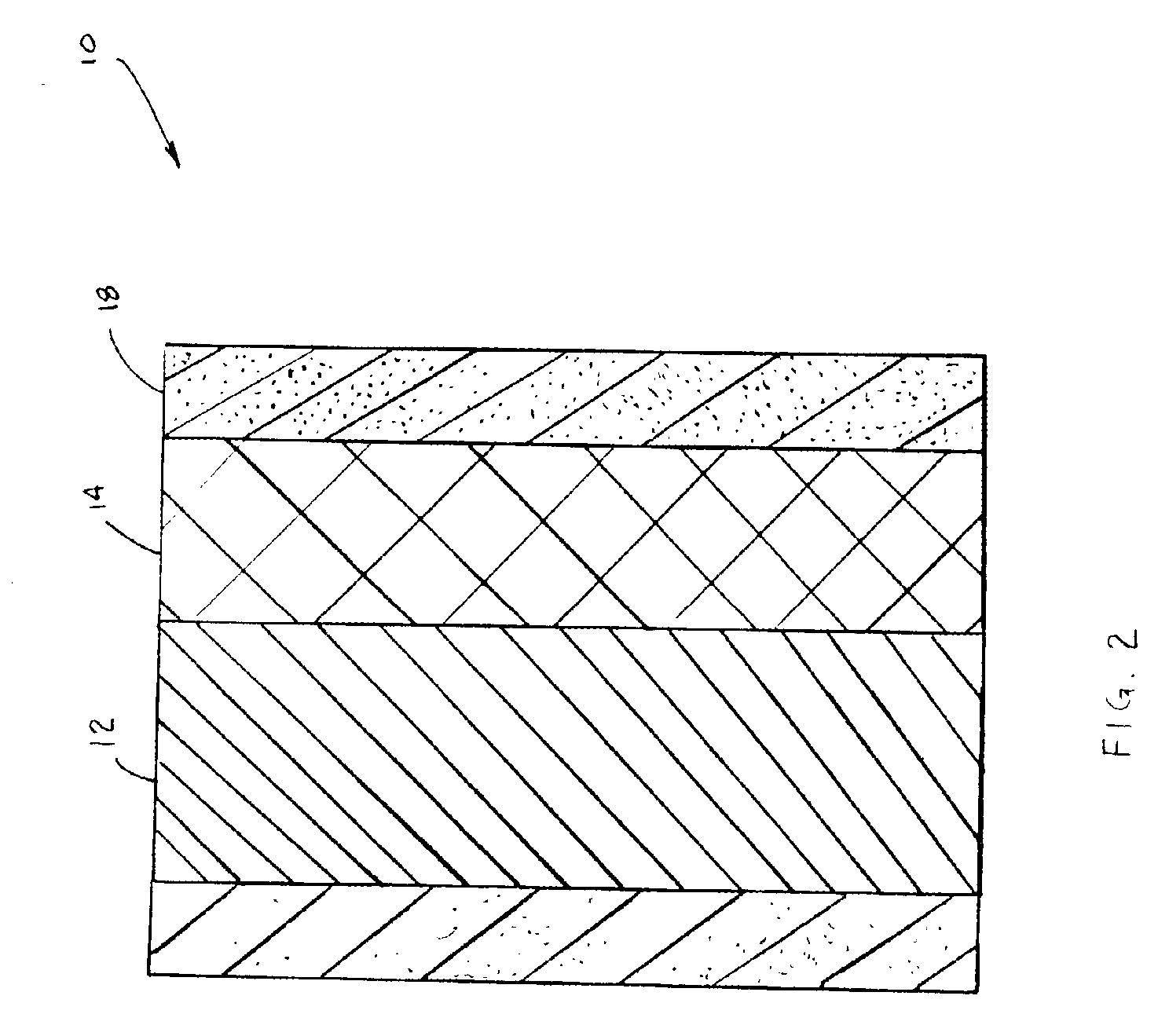Acoustical Insulation Laminate with Polyolefin Layer and Process for Making
a technology of acoustical insulation and polyolefin, which is applied in the field of acoustical insulation laminate products, can solve the problems of affecting the performance of the product, affecting the quality of the product, so as to achieve equal or greater performance and light weight
- Summary
- Abstract
- Description
- Claims
- Application Information
AI Technical Summary
Benefits of technology
Problems solved by technology
Method used
Image
Examples
Embodiment Construction
[0022] In accordance with the present invention as shown in FIGS. 1 and 2, an acoustical insulation laminate 10 is provided herein having at least a front and a rear surface. The acoustical insulation laminate 10 includes an acoustical insulation or sound absorbing material mat 12, a polyolefin film 14 having at least one acoustical flow-through opening 16, and preferably a face cloth 18. The acoustical insulation mat 12 has a front and a rear surface, is preferably formed of fiberglass, and may vary in weight and thickness in order to vary the frequency absorption characteristics. A preferred fiberglass mat will be from 2 mm to 155 mm in thickness and the film will be from about 0.2 mil to 20 mils in thickness. Moreover, the cross-sectional area of the openings 16, prior to molding, will be from 0.10 to 25.4 millimeters square (mm2) and spaced throughout the film. The textile fiberglass fibers, preferably from less than 12.7 mm to about 127 mm in length and greater than 5 microns i...
PUM
| Property | Measurement | Unit |
|---|---|---|
| pressure | aaaaa | aaaaa |
| pressure | aaaaa | aaaaa |
| temperature | aaaaa | aaaaa |
Abstract
Description
Claims
Application Information
 Login to View More
Login to View More - R&D
- Intellectual Property
- Life Sciences
- Materials
- Tech Scout
- Unparalleled Data Quality
- Higher Quality Content
- 60% Fewer Hallucinations
Browse by: Latest US Patents, China's latest patents, Technical Efficacy Thesaurus, Application Domain, Technology Topic, Popular Technical Reports.
© 2025 PatSnap. All rights reserved.Legal|Privacy policy|Modern Slavery Act Transparency Statement|Sitemap|About US| Contact US: help@patsnap.com



